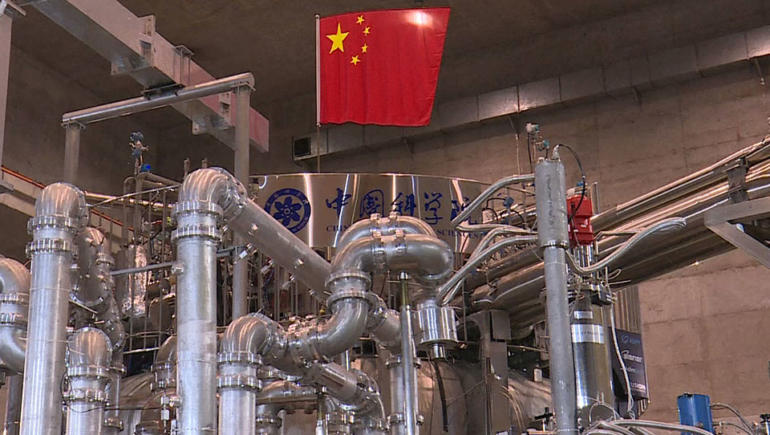Solar and wind power make up a growing part of the world’s electric power. Nuclear fusion also has potential.
But scientists have been unable to generate much of it — until now.
CGTN’s Frances Kuo shows us how a new site in China mimics a method billions of years old — and millions of kilometers away.
With its intricate web of cables and pipes, it’s an “artificial sun” in China.
And, it represents the future of clean energy technology.
It’s a reactor in eastern Anhui province that utilizes “nuclear fusion,” a process that naturally occurs in the sun.
It involves atoms of hydrogen “fusing” together to create helium which results in huge amounts of energy.
“China had a relatively late start in nuclear fusion development, but given our local government and central government’s high level of attention in innovation, especially as our domestic processing and manufacturing sectors developed, it accelerated some of our processes,” said Song Yuntao of the Institute of Plasma Physics in Hefei.
Nuclear fusion has become attractive because it holds the promise of limitless amounts of energy without the harmful greenhouse gases that cause global warming.
But the process is difficult and expensive.
That’s in part why China has partnered with several countries on the project including the European Union, India, Japan, Russia the Republic of Korea and the United States.
“Fusion is not something that can be accomplished by one country, just like ITER (International Thermonuclear Experimental Reactor), which needs people around the world to work together to make it,” Song said.
The nuclear reactor has already achieved several “firsts.”
In 2017, it became the world’s first facility to maintain proper conditions for nuclear fusion, for longer than 100 seconds.
Last November, the reactor achieved a temperature of 100 million degrees Celsius – six times hotter than the Sun’s core.
The hope is to have a fully-functioning plant by 2050 and build a separate reactor that could produce fusion power for commercial use.
Miles Pomper discusses the benefits and realities of nuclear fusion as an energy source
CGTN’s Mike Walter interviewed Miles Pomper about nuclear fusion. He’s a Senior Fellow in the Washington office of the Center for Nonproliferation Studies.
 CGTN America
CGTN America

